
views
Refrigerator Defrosting
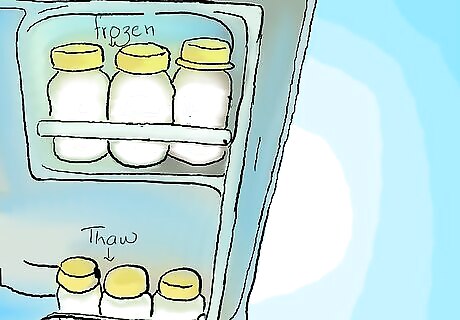
Place the container of breast milk in the refrigerator. Transfer the breast milk from the freezer to the refrigerator. Make sure to thaw frozen breast milk before it turns bad. When stored in a deep freezer, it can last from 6 to 12 months, but when stored in a standard freezer attached to the refrigerator, it only lasts 3 to 6 months. If kept in a freezer compartment of a refrigerator, breast milk is only good for 2 weeks. Place the container of breast milk near the front of the refrigerator as you thaw it. The front of the refrigerator is slightly warmer than the back but still safe enough to thaw the milk.

Let thaw overnight. Give the container of breast milk about 8 hours to defrost completely. Check that it is thoroughly defrosted by opening the container and stirring it with a spoon or coffee stirrer. If you feel any frozen chunks of breast milk, allow the container to thaw in the refrigerator for another couple of hours or finish thawing it quickly by placing it under cool to lukewarm running water.
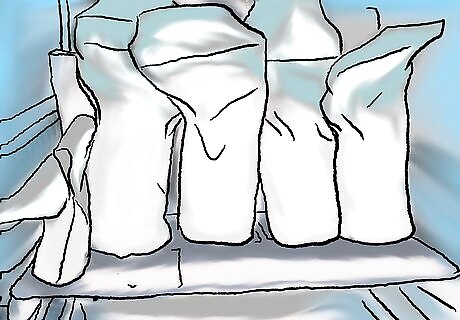
Store up to five days. Thawed breast milk is best used immediately, but it is safe for your baby to drink when stored in the refrigerator for up to five days. Move the container to the back of the refrigerator, where temperatures tend to be the coldest.
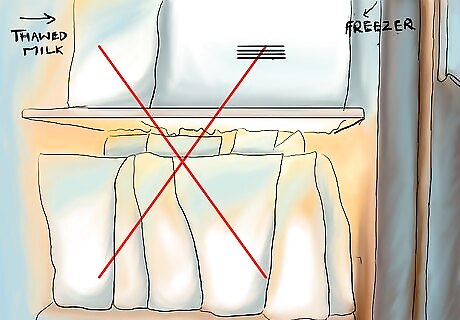
Do not re-freeze. Re-freezing the breast milk can cause lipids in the milk to degrade. The milk will be of lower quality and may even start to spoil.
Running Water
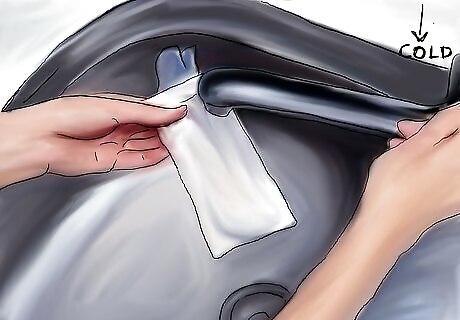
Place frozen breast milk under cool water. If you are warming breast milk straight from a frozen state, begin by holding the container of frozen breast milk under cool running water. The water should be just slightly cooler than room temperature. Using cool water for this initial stage is recommended because it brings the temperature of the breast milk up more gradually. If you immediately jumped to hot water, you could cause hot spots to form along the outside while the inside remained frozen. Moreover, you could also accidentally destroy more of the valuable enzymes contained in the breast milk. Only use cool water until you feel that the breast milk has thawed. Looking into the container, you should only see liquid and no floating chunks of frozen breast milk. Gently shake the container to feel for hidden chunks of frozen milk. EXPERT TIP Rebecca Nguyen, MA Rebecca Nguyen, MA International Board Certified Lactation Consultant Rebecca Nguyen is a Certified Lactation Consultant and Childbirth Educator. She runs Family Picnic in Chicago, Illinois with her mother Sue Gottschall, where they teach new parents about childbirth, breastfeeding and child development and education. Rebecca taught preschool through 3rd grade for 10 years, and she received her Master’s Degree in Early Childhood Education from the University of Illinois in 2003. Rebecca Nguyen, MA Rebecca Nguyen, MA International Board Certified Lactation Consultant There are a variety of ways to gently warm your milk. Lactation consultant Rebecca Nguyen says: "You can use a warmer to get the milk to exactly 98.6°, but if you've frozen your milk in a freezer bag, you can also just hold it under very warm water for 30 seconds to 1 minute until you can feel how warm it is. If it's in a bottle, submerge it in a pan of boiling water until it's very warm. However, don't put the milk in the microwave or directly into a pan, because you can get it too hot and burn the baby's tongue."

Gradually increase the temperature of the water. Slowly increase the temperature of the running water after the milk is thawed. Increase the water from cool to room temperature, from room temperature to warm, and from warm to hot. Bringing the temperature up slowly destroys fewer enzymes in the milk and heats it more evenly. Stop before the water begins to steam. You do not want to make the breast milk so hot that it burns your baby's sensitive mouth. Note that chilled breast milk is perfectly safe for your baby to drink, but if you have a fussy eater, you may need to warm it to room temperature to make it seem more appetizing.
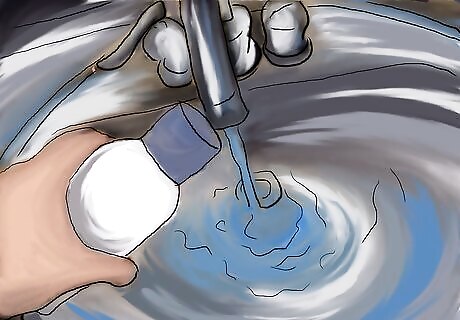
Warm chilled breast milk under warm water. If you thawed the milk in the refrigerator or only had it stored in the refrigerator to start with, skip the cool water stage and place the container of breast milk directly under warm running water. Gradually increase the temperature of the water from warm to hot, stopping before the water begins to steam.
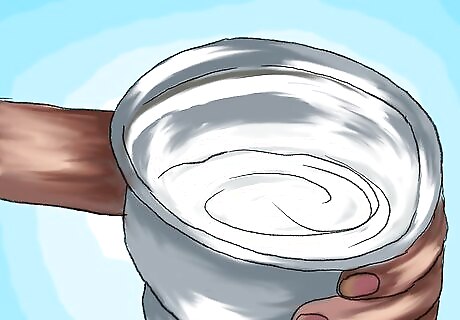
Swirl the milk around. Make sure that the breast milk is evenly warmed by gently swirling the container or bottle, thereby swirling the milk around. You could also even out the temperature by stirring the breast milk with a spoon or coffee stirrer.
Warm Water Bath
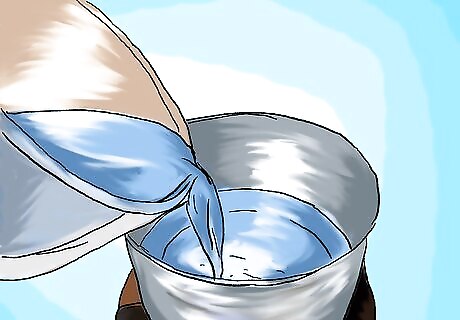
Heat a pot of water. Fill a small saucepot halfway with water and heat it on the stove over medium heat. Once the water begins to steam but before it begins to simmer or boil, pull it off the stove. Do not allow the water to reach its boiling point, as it may end up heating the breast milk too quickly if it is this hot. Always pull the pot of water off the stove before preparing to put the bottle or container of breast milk inside. Never directly heat the breast milk over the stove.Warm Breast Milk Step 9Bullet2.jpg
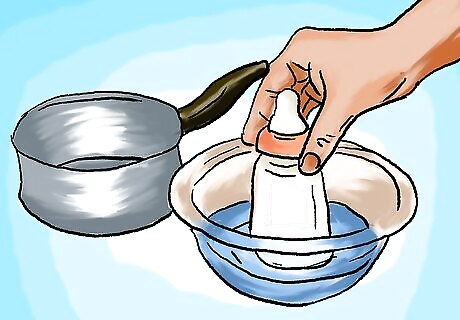
Place the breast milk in the hot water. You can either sit the bottle or container of breast milk in the pot of hot water or continually swirl it around in the hot water. It is safe to allow the bottle to touch the bottom of the pot once you remove the pot from the stove, but if you are still apprehensive, simply hold the bottle in the water without letting it touch the bottom. You can warm breast milk from a frozen or chilled state using this method. If you are warming breast milk from a chilled state, it should only take a few minutes. If warming it from a thawed state, it may take twice the time.

Make sure the temperature is even throughout. Carefully swirl the bottle or container of milk to even out the temperature. You could also stir the milk with a spoon or coffee stirrer to accomplish the same task.
Bottle Warmers

Read the instructions. No two bottle warmers are exactly alike, so it is essential that you read the instructions thoroughly before using it. While the exact specifications and instructions vary from machine to machine, there are some general similarities. Note that many, though not all, bottle warmers can also double as baby food warmers for when your child starts eating solids and cereals.
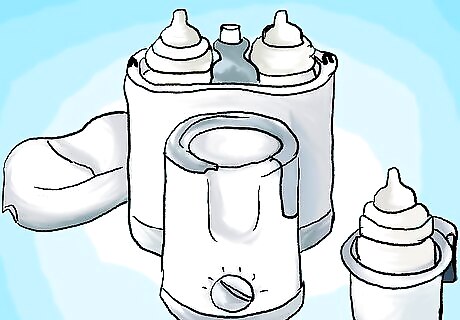
Note whether the warmer uses a bath or steam. Some bottle warmers warm the bottle in a hot water bath, but most use steam. Bottle warmers that use a warm water bath work the same, in principle, as a warm water bath you create without a bottle warmer. The bottle of breast milk is immersed directly into the heated water. Bottle warmers that use steam use less water. The water is heated in a separate compartment by a heating element or hot plate, and the steam comes up into the bottle compartment to warm the breast milk. This is a more gradual heating method.
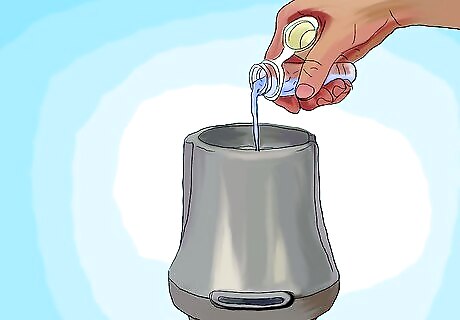
Fill the water reservoir. Pour tap water into the reservoir up to the bottle warmer's "fill line." If the warmer has no fill line, check the instructions to determine how much water to use.Warm Breast Milk Step 14Bullet1.jpg Water bath warmers tend to use more water than steam warmers. The water should be changed in between uses for almost all water bath warmers and most steam warmers. Some steam warmers have reservoirs that stay filled until the levels dip too low, at which point a refill sensor light goes off.
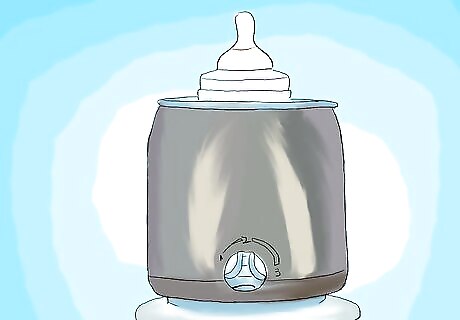
Insert the bottle. Secure the bottle of breast milk in the warmer, placing it inside the bottle compartment. The bottle will sit loose in some warmers, while others may require you to "snap" it into place.
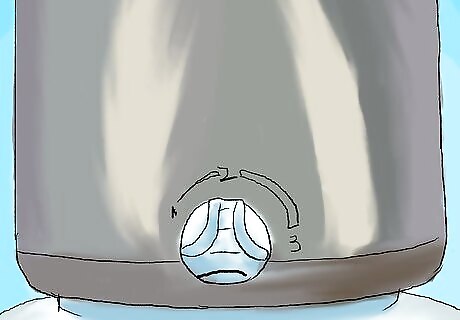
Set the control dial and warm the milk. Follow the instructions to determine how high or low to set the temperature dial, if the warmer has a dial. Press the start button and wait for the appliance to click off. Most bottle warmers have a sensor light that comes on and off to tell you when the warming session is done. Others also make a ring or alarm noise when the process is done.














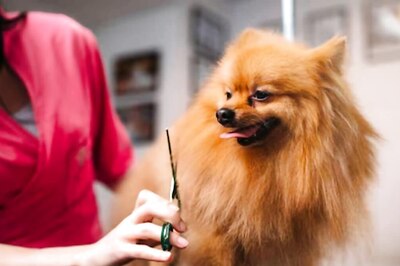





Comments
0 comment